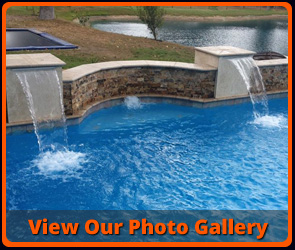The average inground pool installation costs more than $50,000. For many who choose to get a new pool, it clocks in as the biggest expense on the property behind the house itself. Unforeseen expenses can drive those costs even higher still.
The pool construction process requires a clear, realistic vision. As tempting as it can be to rush into the project in hopes of getting everything done and paid for by summer, take your time and approach with a clear sense of your goals.
Want to make sure your pool finishes up on time and within budget? Keep reading and we’ll give you our best tips on every step of the project.
1. Don’t Neglect Pool Construction Permits
A pool will permanently change the landscape of the area. Municipal governments have a stake in the landscape, so you can expect to keep in touch during construction. Start by assessing your local permit process.
It’d be nice if we had a one-size-fits-all approach for you on this one, but we don’t. A consultation with a builder will provide some guidance, as your builder will have some familiarity with the process. You’ll also want to contact the agency that handles building permits in your area.
In some areas, you will only need a residential building permit to begin building your new pool. Other areas may require electrical or water-related permits, however, due to the need for pumps and filtration systems. Either your builder or the government office will be able to set out which permits you’ll need.
If you participate in a homeowners’ association, it may also provide some guidance. A few HOAs don’t allow pools, but if yours does, it should be able to tell you what you’ll need.
The permit process may also involve taking measurements and setting out the precise location of your pool for safety reasons. You can do this yourself or contact an inspector.
2. Protect and Cushion Your Budget
Once you have a general sense of how much you expect to spend, expect to spend more. Any large construction project will present unexpected eventualities, no matter how much you plan. Your pool budget will work no differently.
You should do your best to protect your initial budget and plan, however. A reputable builder won’t ambush you with hidden costs and expensive new problems in the middle of the installation process. Be firm with the people you talk to regarding how much you plan to spend and take control of the cost of a pool.
3. Protect Your Time
Everything we said about protecting your budget also applies to your time. It’s easy to fantasize about getting your pool up and running right as the warmest months of the year hit. Unexpected delays can hit at any stage in the construction process, though, so you’ll have better results if you build in some cushion.
The average installation time for a pool ranges from six to twelve weeks. You should trust your builder’s estimate but mentally build in a little cushion toward the longer end of that range. While weather and the permit process can prevent you from getting started as early as you like, try to start early.
4. Assess Long-Term Costs
Even after that initial outlay for an in-ground pool, you should remember that you’ll be paying for secondary expenses. Common pool expenses include opening and closing the pool, chemical treatment, pumping, and heating. Depending on your climate you’ll also have other maintenance expenses.
All in all, you can probably expect to spend another couple thousand dollars a year on taking care of your pool. Specific numbers vary depending on how many months out of the year you can use it and weather events.
All that means you should take greater care in protecting your budget. If you leave some money in the budget for emergencies and nothing comes up, you can use that money to defray these costs.
5. Have a Complete Plan
A lot of new pool owners have specific desires for interesting pool features like water slides or fountains. Other associated fixtures like patio areas can also figure into a pool plan. Regardless of what features you decide you want, when you start planning pool construction, think about those features as well.
Every feature adds time and expense. A water slide needs plumbing, and a diving board needs space. Does your plan account for these elements?
If you don’t plan for them early, you’ll need to spend more time and money on their final implementation. That slide will skyrocket in price if you have to install all of its plumbing after the fact. The time it takes to install will also increase.
As always, your builder can provide guidance regarding your specific desires. Try to avoid getting hung up on specific placements and sizes, but be honest about the things you’d like your pool to have. Depending on the size of the area you’re working with, your builder should be able to accommodate most requests.
Get Started Soon
Even in the middle of winter, thinking about future pool plans can be a smart move. The sooner you get started with your plan, the easier the pool construction process will be, and the happier you’ll be with the final result. As long as you remain proactive about your needs and desires, you can also probably come in under budget.
Maybe this article has given you some ideas about your new pool. Do you want to sit down with us and discuss your plans? Contact us to request a quote or schedule a consultation.




